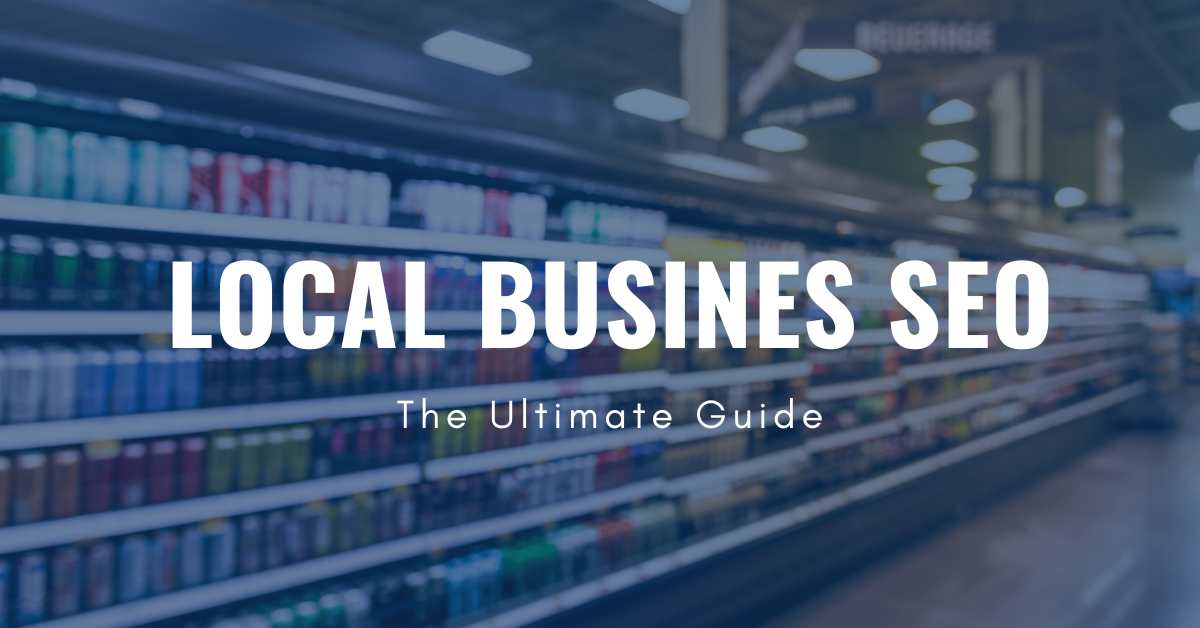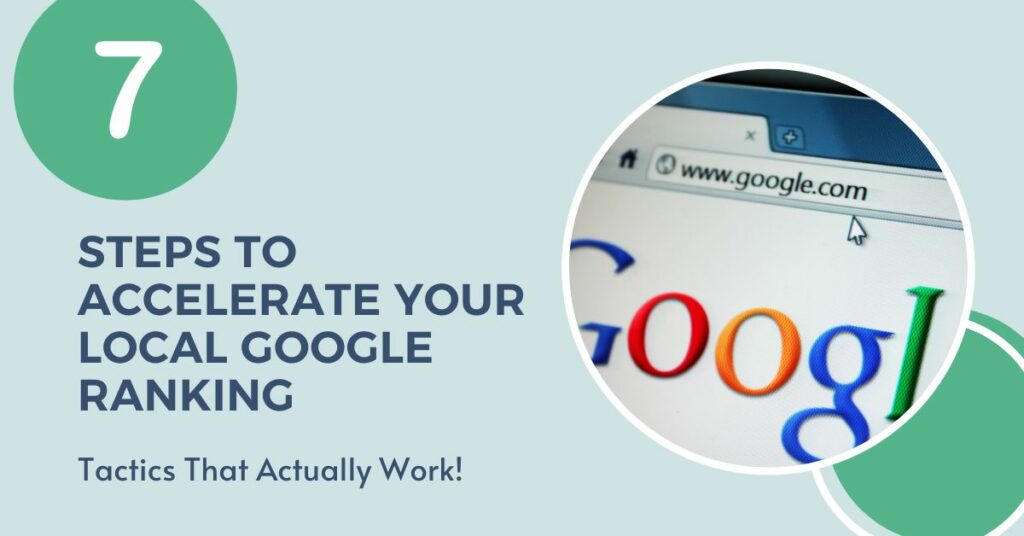If you own a local business, having a strong online presence is crucial for success in today’s digital world. One of the most effective ways to boost your online visibility is through local business SEO (search engine optimization). This guide will walk you through the essential steps for optimizing your website and online presence to rank higher in local search results, attract more customers, and ultimately grow your business.
Table of Contents
- Understanding Local SEO
- Optimizing Your Website for Local SEO
- Google My Business Optimization
- Managing Online Reviews and Ratings
- Building Local Citations
- Leveraging Social Media for Local Business
- Local Link Building
Understanding Local Business SEO
Local Business SEO refers to the process of optimizing a website and other aspects of a business’s online presence to rank higher in search engine results for local searches. In other words, it’s a way to help potential customers in your area find your business more easily when they search for products or services like yours on Google, Bing, and other search engines.
SEO Tips for Local Businesses and Why is Local SEO Important?
For local businesses, appearing in the top search results can be a game-changer. Here are a few reasons why a Local Business SEO strategy is essential:
- Increased Visibility: It helps potential customers find your business when they’re looking for local products or services.
- Targeted Traffic: Local Business SEO drives targeted traffic to your website, leading to higher conversion rates.
- Competitive Edge: Ranking higher than your competitors in local search results can give your business a significant advantage.
- Cost-Effective: Local SEO is an affordable long-term strategy compared to paid advertising methods such as Google Ads or Facebook Ads.
Optimizing Your Website for Local Business SEO
Here are the key steps to optimizing your website for local search:
1. Perform Keyword Research
Find keywords relevant to your business and location. Be sure to include local or geo-targeted keywords, such as “[business type] in [city]” or “[business type] near me“. Use keyword research tools like Google’s Keyword Planner or Ahrefs Keyword Generator to help you identify popular local search terms.
2. Optimize On-Page Elements
Make sure your website’s on-page elements, such as title tags, meta descriptions, and headings, include your target local keywords. For example, if you have a pizza restaurant in Boston, your title tag could be “Best Pizza in Boston | Joe’s Pizza Place“.
3. Create Local Content
Develop unique and valuable content that targets local customers. This can include blog posts, videos, or infographics about local events, neighborhood guides, or industry news specific to your area.
4. Optimize Site Structure and Navigation
Ensure that your website is easy to navigate, with a clear hierarchy and accessible menus. A well-organized site helps search engines understand your content better and also provides a better user experience for visitors.
5. Improve Site Speed and Performance
Slow-loading websites can negatively impact user experience and search engine rankings. Optimize your site’s loading speed by compressing images, minimizing HTTP requests, and using browser caching. You can use tools like Google PageSpeed Insights or GTmetrix to test your site’s speed and get recommendations for improvements.
6. Ensure Mobile-Friendliness
Make sure your website is responsive and mobile-friendly, as most local searches are performed on mobile devices. Use Google’s Mobile-Friendly Test to check your site’s mobile compatibility.
Google My Business for Local SEO
Google My Business (GMB) is an essential tool for local businesses, as it allows you to create and manage a public listing that appears in Google Maps and local search results. Follow these tips to optimize your GMB listing:
7. Claim and Verify Your Listing
Claim your business listing on Google My Business and follow the verification process. This will give you control over your business’s information on Google and help improve your local search rankings.
8. Complete Your Profile
Fill out all the information fields in your GMB profile, including your business name, address, phone number, website, hours of operation, and categories. Add high-quality photos of your business, such as exterior and interior shots, and your products or services.
Build out products and services section of your Google My Business profile
9. Build Out Products and Services
When building out this section, it is important to provide accurate and up-to-date information. This includes listing all of your products and services, along with detailed descriptions and pricing information.In addition to providing detailed information, it is also important to use high-quality images to showcase your products and services. This will help potential customers get a better idea of what you offer and entice them to choose your business over your competitors. A robust products and services section of your Google My Business profile is essential for any business looking to increase their online presence and attract new customers.
10. Encourage Customer Reviews
Ask your customers to leave reviews on your GMB listing. Positive reviews not only improve your online reputation but also impact your local search rankings. Respond to both positive and negative reviews professionally and promptly.
11. Utilize GMB Features
Take advantage of features like Google Posts to share updates, promotional offers, or events. Enable the Questions & Answers feature to address common customer queries directly on your GMB listing. You should also include any special offers or promotions that you are currently running.
Managing Online Reviews and Ratings
Online reviews used to have a small impact on local business seo rankings, but now online reviews can have a major impact on your success. Positive reviews can help you attract new customers and build a strong reputation, while negative reviews can drive people away and damage your brand. A large quantity of reviews can indeed help you rank higher. To effectively manage your online reviews, there are several strategies you can employ.
12. Monitor Reviews on Multiple Platforms
Keep track of customer reviews on various review platforms, such as Google My Business, Yelp, Facebook, and TripAdvisor. Respond to reviews promptly and thank customers for their feedback. This shows that you’re listening and willing to make things right, which can help mitigate the impact of negative reviews.
13. Encourage Positive Reviews
It’s also important to encourage satisfied customers to leave positive reviews, which can help balance out any negative feedback. Consider offering incentives or rewards for leaving reviews, such as discounts or free products/services. This can help incentivize customers to take the time to leave feedback, which can ultimately benefit your business.
14. Leverage Reviews on Your Website & Social Media
Make sure you are showcasing your positive reviews across your marketing channels, such as on your website or social media pages. Its real easy to just copy the review and paste it into an image for social media. There are also tools for putting a reviews widget on your website. This can help build trust with potential customers and showcase the positive experiences others have had with your business.
15. Address Negative Feedback
Respond to negative reviews professionally and calmly, offering solutions and apologizing for any inconvenience caused. Showing that you care about customer satisfaction can help improve your business’s image and potentially turn a dissatisfied customer into a loyal one.
Building Local Citations
Local citations play a crucial role in enhancing the online visibility of your business by increasing its local search rankings. These references are essentially mentions of your business’s name, address, and phone number (NAP) on other websites that are relevant to your industry or location. They help to establish your business’s credibility and authority within your local market, which can be beneficial for attracting new customers.
16. Create Consistent NAP Citations
Ensure that your business’s NAP information is consistent across all online platforms, including your website, social media profiles, and directory listings. Inconsistent citations can confuse search engines and negatively impact your local search rankings. Good consistent sitations build trust. When consumers see your business’s name and contact information listed on multiple reputable websites, they are more likely to view your business as a trusted and reliable source for the products or services they need.
17. Utilize Local Business Directories
Submit your business’s NAP information to prominent local business directories, such as Yelp, YellowPages, and Bing Places. Target industry-specific directories and local chamber of commerce websites for additional citations. By building a strong network of online references that accurately reflect your business’s NAP information, you can help to establish your business as a local authority and attract more customers to your door.
Leveraging Social Media for Local Business SEO
Social media platforms can be a valuable tool for enhancing your local business’s online presence and boosting local business SEO. By leveraging social media platforms, you have the opportunity to reach a wider audience and increase your local business’s online presence. This can lead to more traffic, more leads, and ultimately more sales.
18. Choose the Right Platforms
Identify which social media platforms your target audience is most active on. This may include Facebook, Instagram, Twitter, or LinkedIn. By understanding your audience’s preferences, you can tailor your content to better resonate with them. Select social media platforms that are popular among your target audience and relevant to your industry, such as Facebook, Instagram, Twitter, or LinkedIn.
19. Create Engaging Content
Regularly post engaging content that highlights your business’s products or services. This can include photos, videos, or blog posts that showcase your expertise and personality. By providing value to your audience, you can build a loyal following that will be more likely to recommend your business to others. Develop content that appeals to your local audience, including information about local events, promotions, and partnerships with other local businesses. Use a mix of images, videos, and text to keep your content fresh and varied.
20. Interact With Your Followers
Respond to comments, messages, and reviews, and engage with your followers by liking, commenting, and sharing their content. Foster a sense of community and loyalty among your social media audience.
21. Track Your Success
measure your social media efforts and adjust your strategy as needed. This can include tracking metrics like engagement, reach, and conversions to see what’s working and what’s not. By continually refining your approach, you can optimize your social media presence and maximize its impact on your local business SEO.
Local Link Building
Building high-quality backlinks to your website from other local websites is crucial for improving your local search rankings. Focus on the following strategies for effective local link building:
22. Create Shareable Content
Develop compelling and unique content that local websites and blogs would be interested in linking to or sharing on their platforms, such as local news stories, community events, or industry trends.
23. Establish Partnerships With Local Businesses
Forge partnerships with other local businesses and collaborate on joint promotions, events, or blog posts. These partnerships can lead to valuable backlinks and increase your local visibility.
24. Participate in Local Community Activities
Get involved in local events, charities, or community initiatives to increase your business’s visibility and credibility. This will help you build relationships and potentially earn backlinks from local organizations, event websites, or news outlets.
By following the steps outlined in this guide, you’ll be well on your way to boosting your local business’s online presence and attracting more customers through local business SEO. Keep in mind that SEO is an ongoing process, and it’s essential to continuously monitor, analyze, and refine your strategies to achieve the best possible results.







